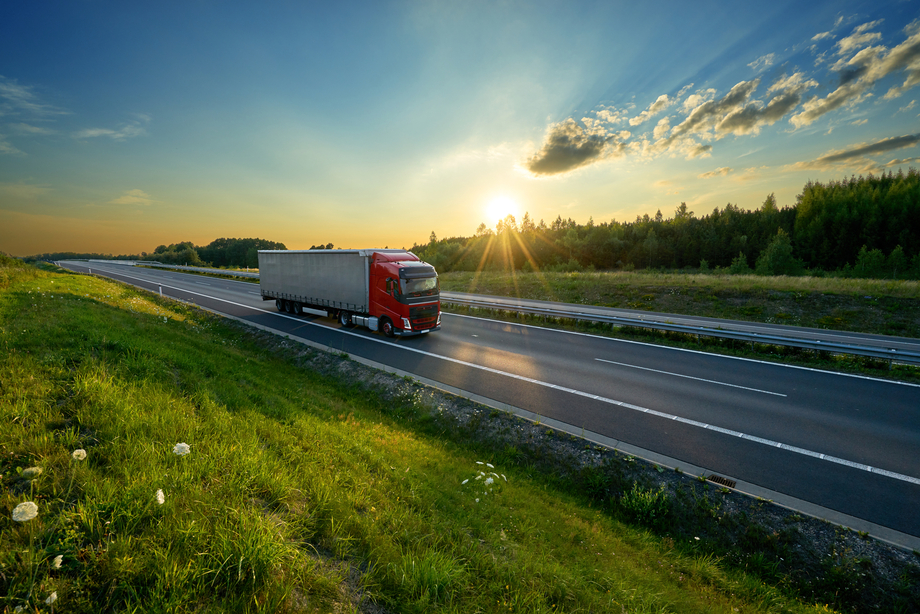BIO LNG (liquefied biogas) is a renewable energy that is gaining ground in Europe. It is an ideal alternative for professional transport that combines low emissions, high performance, reduced environmental costs and compatibility with existing infrastructure. In addition, BIO LNG promotes a circular economy model by reusing waste. All this makes it an option that perfectly meets the environmental and operational challenges of the transport company.
BIO LNG is now part of our commitment to lead the change towards more sustainable transport. And, in this article, we tell you everything you need to know.
What is BIO LNG?
BIO LNG is a renewable energy source that is formed from organic waste through anaerobic digestion processes. It is a biological process in which microorganisms break down organic matter in the absence of oxygen, producing biogas (a mixture of methane and carbon dioxide) and a solid or liquid material called digestate, which can be used as a fertilizer. This process makes it a carbon-neutral or even carbon-negative fuel, as it captures methane that would otherwise be released into the atmosphere. Thus, we can say that BIO LNG is formed from the anaerobic decomposition of organic matter, such as agricultural waste, manure, sewage or municipal solid waste.
Among its main advantages, BIO LNG significantly reduces CO₂ emissions compared to fossil fuels. In addition, it is a sustainable alternative that offers multiple advantages over conventional natural gas, as we will tell you below. All this makes it an ideal energy for sectors such as heavy transport and industry, contributing to the fight against climate change.
Key Differences between LNG and BIO-LNG
LNG (Liquefied Natural Gas) and BIO-LNG (Bio-Liquefied Natural Gas) are two similar fuels, as both are in a liquid state at low temperatures. However, they differ in four key aspects: their origin, environmental impact, availability and cost.
- Origin: LNG is extracted from natural gas deposits that may be underground or under the sea, making it a fossil energy. BIO LNG, on the other hand, is produced from organic waste, so it is a renewable source.
- Environmental impact: It is true that LNG is less polluting than oil, but it still emits CO2, and its extraction generates a significant environmental impact. BIO LNG, however, is carbon neutral, since the CO₂ emitted during its combustion has already been captured by the plants or organisms that gave rise to the biogas.
On the other hand, we can say that LNG has limited availability, since it is a finite resource, and BIO LNG is renewable and sustainable, because its production can be integrated into the circular economy by reusing waste and minimizing waste.
- Availability and cost: In this case, it must be said that BIO LNG is an energy with a growing supply, but it is still more expensive. In many countries, however, its production and use is encouraged through subsidies, carbon credits and energy transition policies. LNG, on the other hand, has greater availability and lower cost.
What advantages does BIO LNG offer to the transport company?
In addition to being an energy that meets sustainability criteria, helping to drive the transition to cleaner transport, BIO LNG offers multiple benefits to the professional transport company. Here are some of them:
- Reduced greenhouse gas emissions and compliance with environmental regulations.
- Long-term economic savings, thanks to greater fuel efficiency and tax incentives offered in many countries.
- Increased range and performance in long-haul vehicles, as well as lower maintenance costs. It should also be added that LNG-fueled vehicles can use BIO LNG without modification, as both fuels are chemically very similar.
- Contribution to sustainability goals, which allows alignment with the Sustainable Development Goals (SDGs) established by the UN, particularly those related to climate action and the circular economy.
OnTurtle is committed to sustainability: BIO LNG refueling in Germany
At OnTurtle, we are working to drive the shift towards more sustainable transport. To this end, we offer cleaner alternative energy supply networks to our customers in addition to diesel. “In 2019 we bet for the first time on LNG and we currently have 154 stations strategically located in Spain, France, Belgium, the Netherlands, Italy and Germany,” explains Marta Fàbregas, CEO at OnTurtle, ”And in 2024 we have tripled our HVO supply network, exceeding seventy of stations in six countries (the Netherlands, Austria, Germany, Spain, Italy and Belgium).” Now they are taking the leap with their first BIO LNG refueling network in Germany.
“Our first BIO LNG refueling network is located in Germany, in collaboration with Knauber, a leading provider of sustainable energy solutions,” says Fàbregas. The station is designed to offer professional transport fleets an accessible and efficient alternative to reduce their environmental impact. “In the midst of the transition towards the decarbonization of the sector, our responsibility is to facilitate the change with increasingly efficient alternatives,” he concludes. What is clear is that our BIO LNG network is just getting started.


